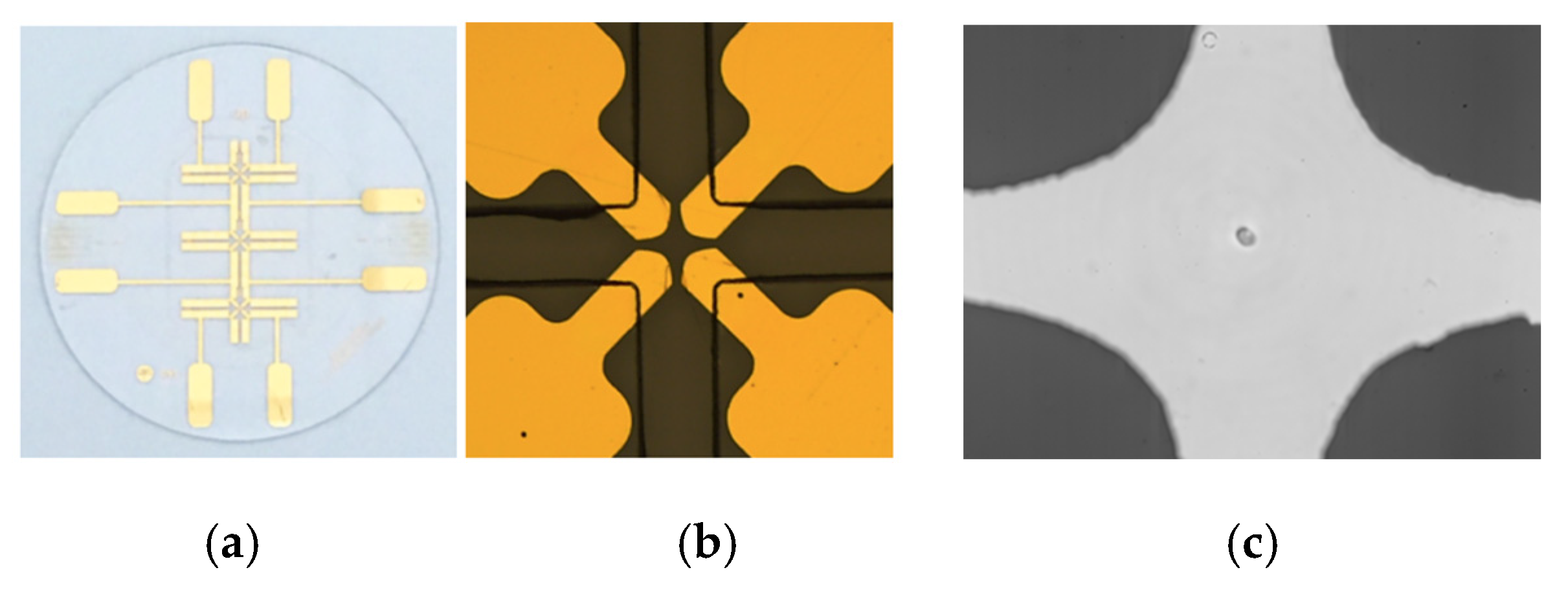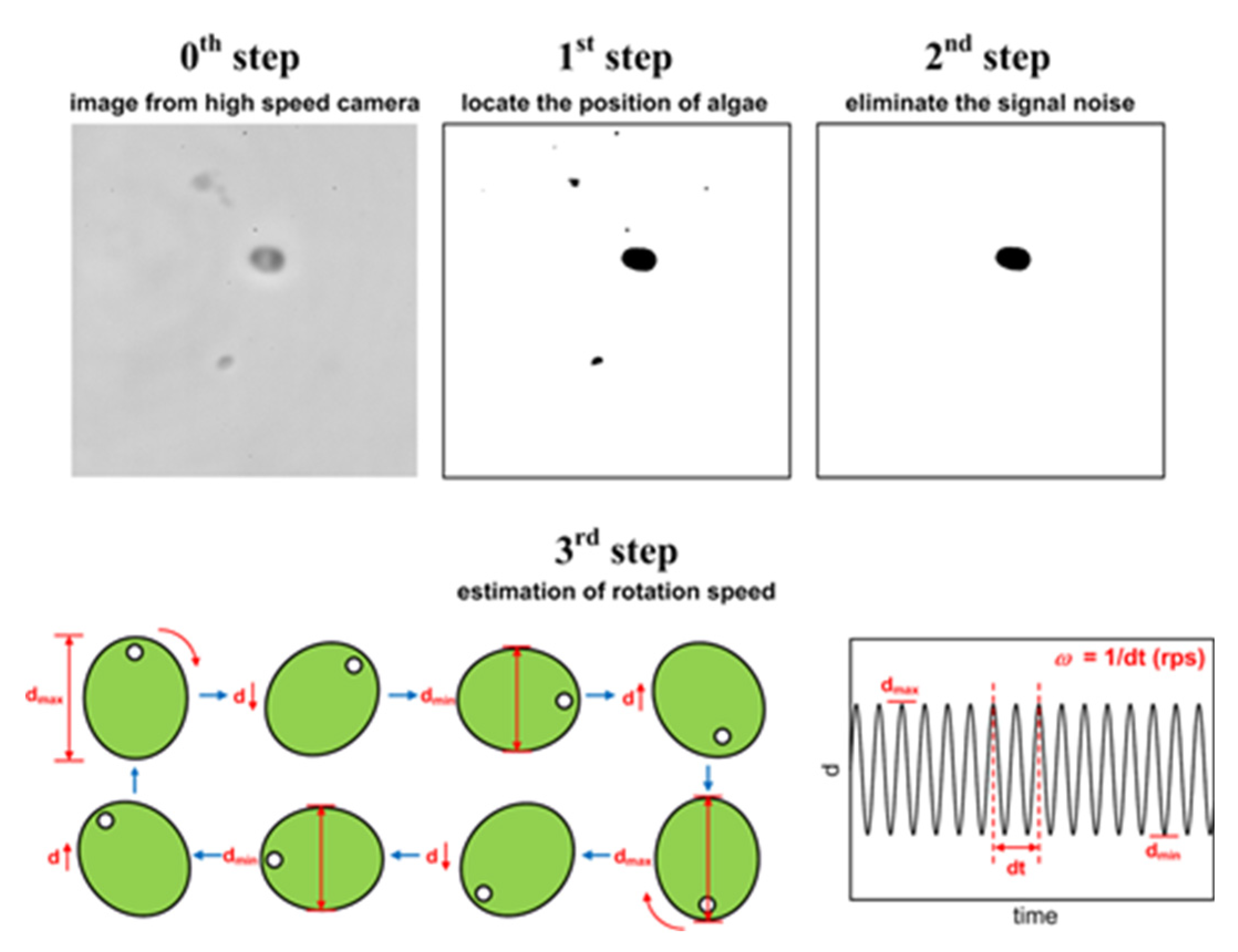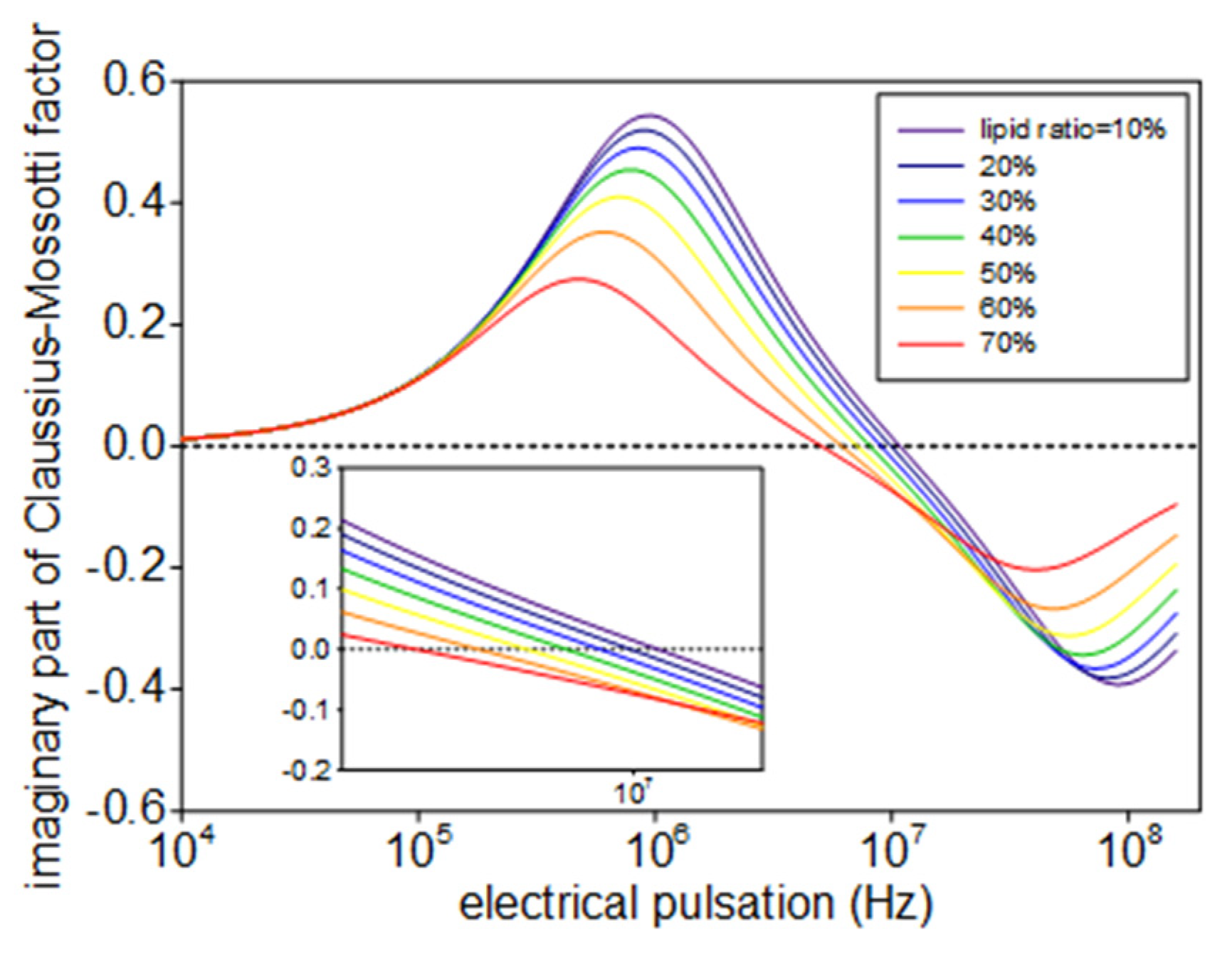Dielectric Characterisation of Single Microalgae Cell Using Electrorotation Measurements †
Abstract
:1. Introduction
2. Materials and Methods
2.1. Device Fabrication
2.2. Experimental Setup
3. Results and Discussions
4. Conclusions
Acknowledgments
Conflicts of Interest
References
- Spolaore, P.; Joannis-Cassan, C.; Duran, E.; Isambert, A. Commercial applications of microalgae. J. Biosci. Bioeng. 2006, 101, 87–96. [Google Scholar] [CrossRef] [PubMed]
- Gawad, S.; Schild, L.; Renaud, P.H. Micromachined impedance spectroscopy flow cytometer for cell analysis and particle sizing. Lab Chip 2001, 1, 76–82. [Google Scholar] [CrossRef] [PubMed]
- Huang, Y.; Hölzel, R.; Pethig, R.; Wang, X.B. Differences in the AC electrodynamics of viable and non-viable yeast cells determined through combined dielectrophoresis and electrorotation studies. Phys. Med. Biol. 1992, 37, 1499–1517. [Google Scholar] [CrossRef] [PubMed]
- Français, O.; Le Pioufle, B. Single Cell Electrical Characterization Techniques. In Handbook of Electroporation; Miklavcic, D., Ed.; Springer: Berlin, Germany, 2016; pp. 1–18. [Google Scholar]
- Trainito, C.I.; Français, O.; Le Pioufle, B. Monitoring the permeabilization of a single cell in a microfluidic device, through the estimation of its dielectric properties based on combined dielectrophoresis and electrorotation in situ experiments. Electrophoresis 2015, 36, 1115–1122. [Google Scholar] [CrossRef] [PubMed]
- Maxwell, J.C. A Treatise on Electricity and Magnetism; Clarendon Press: Oxford, UK, 1881. [Google Scholar]




Publisher’s Note: MDPI stays neutral with regard to jurisdictional claims in published maps and institutional affiliations. |
© 2017 by the authors. Licensee MDPI, Basel, Switzerland. This article is an open access article distributed under the terms and conditions of the Creative Commons Attribution (CC BY) license (https://creativecommons.org/licenses/by/4.0/).
Share and Cite
Lin, Y.-S.; Tsang, S.; Ghasemi, R.; Bensalem, S.; Français, O.; Lopes, F.; Wang, H.-Y.; Sun, C.-L.; Pioufle, B.L. Dielectric Characterisation of Single Microalgae Cell Using Electrorotation Measurements. Proceedings 2017, 1, 543. https://doi.org/10.3390/proceedings1040543
Lin Y-S, Tsang S, Ghasemi R, Bensalem S, Français O, Lopes F, Wang H-Y, Sun C-L, Pioufle BL. Dielectric Characterisation of Single Microalgae Cell Using Electrorotation Measurements. Proceedings. 2017; 1(4):543. https://doi.org/10.3390/proceedings1040543
Chicago/Turabian StyleLin, Yu-Sheng, Sung Tsang, Rasta Ghasemi, Sakina Bensalem, Olivier Français, Filipa Lopes, Hsiang-Yu Wang, Chen-Li Sun, and Bruno Le Pioufle. 2017. "Dielectric Characterisation of Single Microalgae Cell Using Electrorotation Measurements" Proceedings 1, no. 4: 543. https://doi.org/10.3390/proceedings1040543



